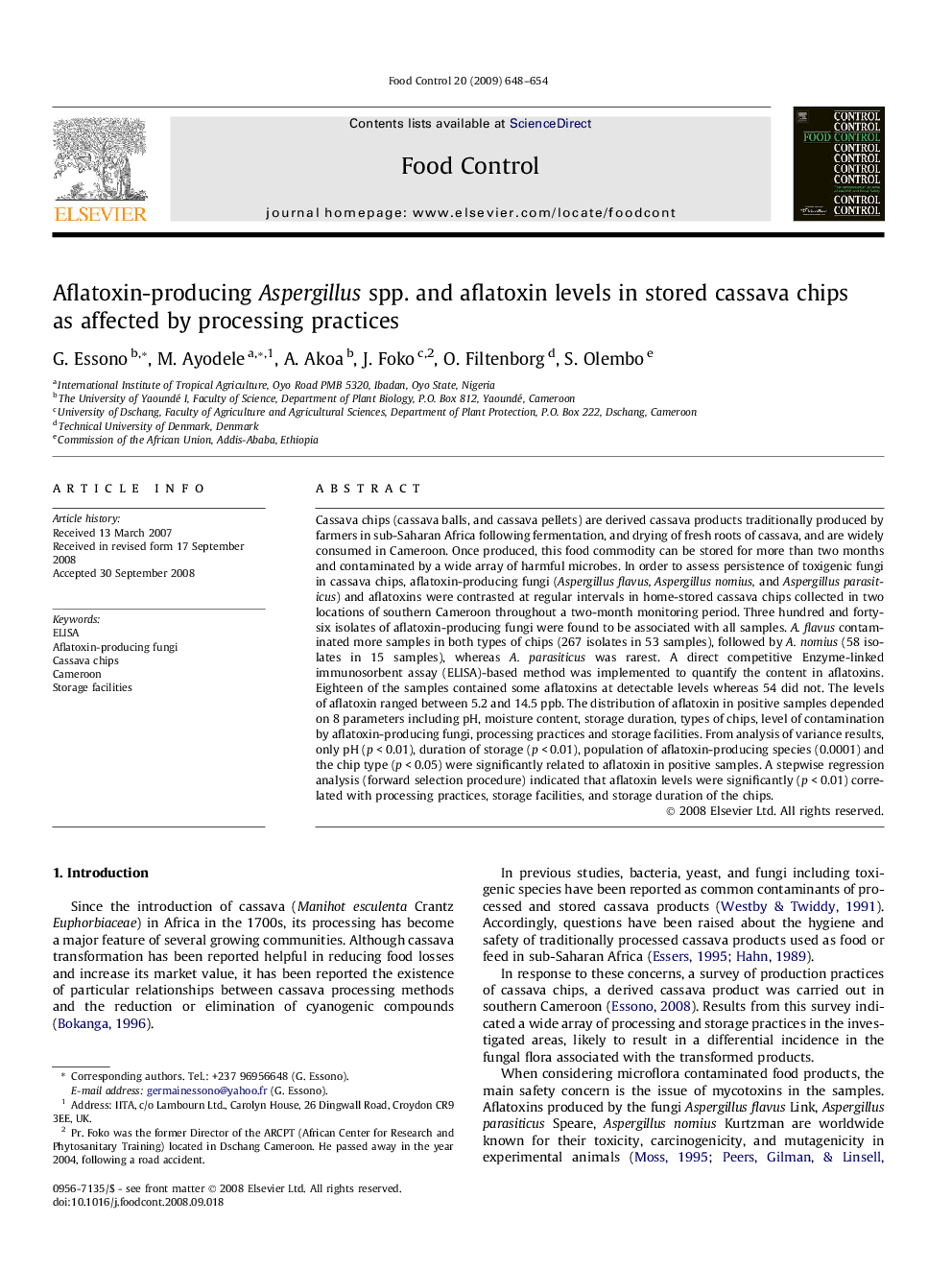| Article ID | Journal | Published Year | Pages | File Type |
|---|---|---|---|---|
| 4560138 | Food Control | 2009 | 7 Pages |
Cassava chips (cassava balls, and cassava pellets) are derived cassava products traditionally produced by farmers in sub-Saharan Africa following fermentation, and drying of fresh roots of cassava, and are widely consumed in Cameroon. Once produced, this food commodity can be stored for more than two months and contaminated by a wide array of harmful microbes. In order to assess persistence of toxigenic fungi in cassava chips, aflatoxin-producing fungi (Aspergillus flavus, Aspergillus nomius, and Aspergillus parasiticus) and aflatoxins were contrasted at regular intervals in home-stored cassava chips collected in two locations of southern Cameroon throughout a two-month monitoring period. Three hundred and forty-six isolates of aflatoxin-producing fungi were found to be associated with all samples. A. flavus contaminated more samples in both types of chips (267 isolates in 53 samples), followed by A. nomius (58 isolates in 15 samples), whereas A. parasiticus was rarest. A direct competitive Enzyme-linked immunosorbent assay (ELISA)-based method was implemented to quantify the content in aflatoxins. Eighteen of the samples contained some aflatoxins at detectable levels whereas 54 did not. The levels of aflatoxin ranged between 5.2 and 14.5 ppb. The distribution of aflatoxin in positive samples depended on 8 parameters including pH, moisture content, storage duration, types of chips, level of contamination by aflatoxin-producing fungi, processing practices and storage facilities. From analysis of variance results, only pH (p < 0.01), duration of storage (p < 0.01), population of aflatoxin-producing species (0.0001) and the chip type (p < 0.05) were significantly related to aflatoxin in positive samples. A stepwise regression analysis (forward selection procedure) indicated that aflatoxin levels were significantly (p < 0.01) correlated with processing practices, storage facilities, and storage duration of the chips.
